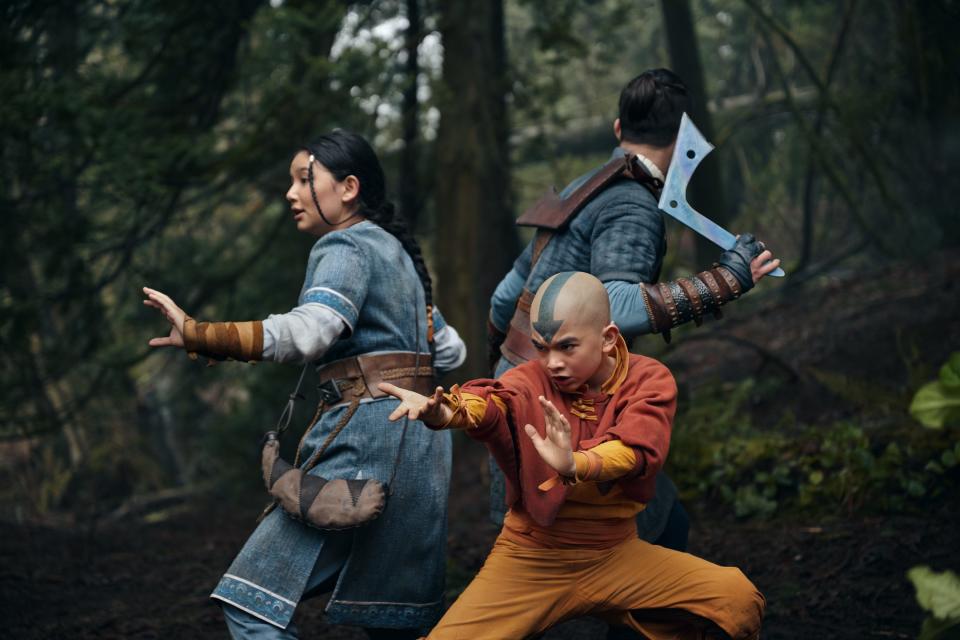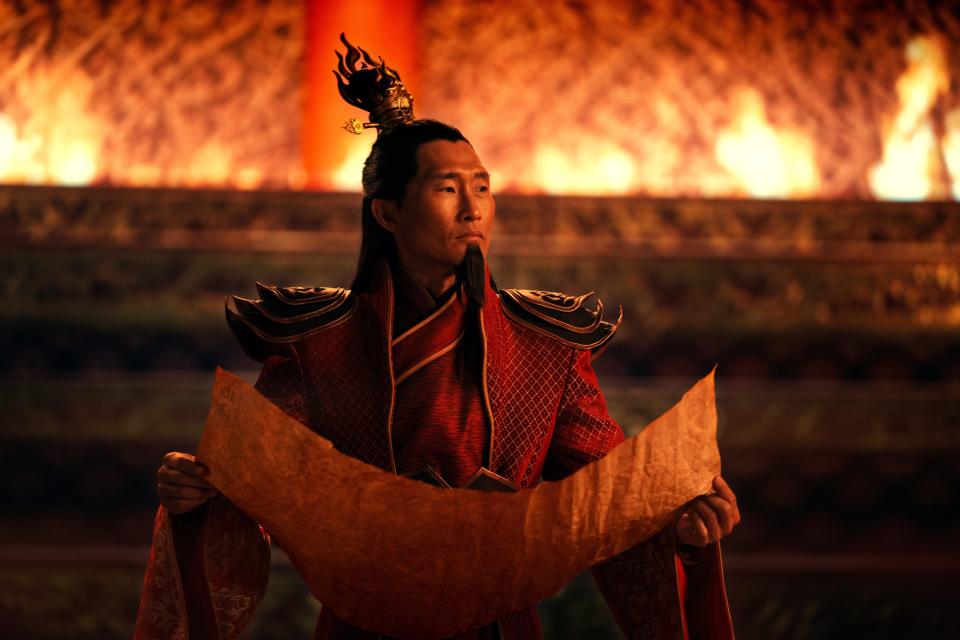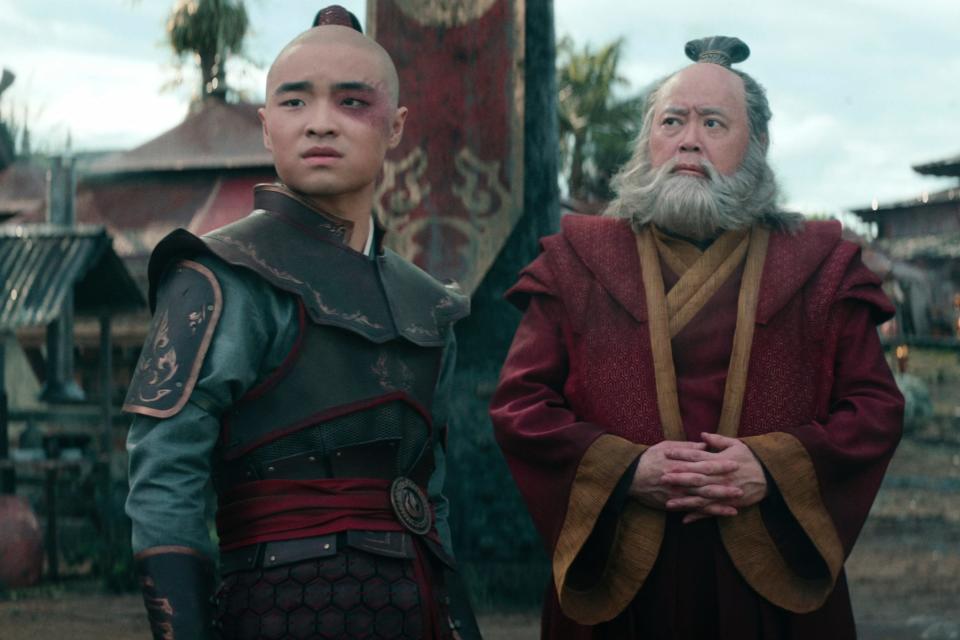Review: Netflix's 'Avatar: The Last Airbender' is a failure in every way
The year was 2010. Barack Obama was president. The only “Tik Tok” to speak of was the song by Kesha. And a beloved animated Nickelodeon series had come to life as a live-action movie.
I’m talking, of course, about the critically panned 2010 film “The Last Airbender,” directed by M. Night Shyamalan. An adaptation of the beloved 2005-08 series “Avatar: The Last Airbender,” Shyamalan’s film has become infamous for its failures. But there was no way yet another adaptation of that richly mythological series could crash and burn so spectacularly, right?
Look, I wanted Netflix’s “Avatar: The Last Airbender” (now streaming, ★ out of four), a new live-action series, to be good. I watched the original series first as a kid and then again (and again) as an adult, and consider it one of the best TV shows ever made (just ask my ballot in this poll).

There was so much potential in this story ? about a world in which some people have the superpower to control water, fire, earth and air through what is called “bending” ? to create something gorgeous and striking in a live-action medium. Not as a shot-for-shot recreation, but as its own epic that embraced the themes and tone of its source material. But out of fear of angering die-hard fans, lack of time and/or budget or a fundamental misunderstanding of what “adaptation” really means, the new “Avatar” is a regretful mess in its first season. Both too slavish to the original and too far removed from it, the new “Avatar” fails in every way. And it’s infuriating.
In both the new and original series, the world of “Avatar” is divided into four nations: the Earth Kingdom, the Air Nomads, the Water Tribes and the Fire Nation, each with benders who can control their respective elements. Things were fine until the Fire Nation started a centurylong war bent on world domination. Just as this war was starting, the mythical Avatar, the only bender who can control all four elements, disappeared.
Turns out the 12-year-old Avatar Aang (Gordon Cormier) is the only airbender to survive a Fire Nation-led genocide (hence the title), and wound up frozen in an iceberg for 100 years before he’s woken by teen waterbender Katara (Kiawentiio) and her brother Sokka (Ian Ousley). The trio sets off on a mission for Aang to learn all four elements and help save the world. They are closely hunted by the Fire Nation’s Prince Zuko (Dallas Liu), who has a maniacal desire to capture Aang after his father (Daniel Dae Kim) banished him until he can do so.
More: 'Avatar: The Last Airbender': Release date, cast, where to watch live-action series

Creator Albert Kim (“Sleepy Hollow”) has clearly tried to maintain fidelity to the animated series. In many ways, it looks like a carbon copy of the cartoon brought to life ? some scenes and aesthetics are recreated with excruciating detail. The original pilot (one of the weakest episodes of the cartoon) is basically refilmed. But it was a lot of effort for naught.
The exaggerated hairstyles (created using truly horrendous wigs), color-coded costumes and fantastical animals have an uncanny valley quality to them in live action. They don’t make sense to the eye. After all, entire countries do not all wear the same shade of blue every day in the real world. Even superhero costumes get a tasteful makeover between comic-book pages and a Marvel movie.
So the new “Avatar” looks sort of like a corrupted facsimile of the original, and at the same time the heart of the first “Avatar” is gone. The new series is emotionally hollow, tonally dissonant and yells its themes at the audience like an unhinged political podcast. The story is condensed from 20 half-hour episodic chapters to eight ill-formed episodes. The writing is creaky, clunky and bogged down by entirely unnecessary exposition and Easter eggs for fans that might as well have neon signs above them reading, “Hey, we watched the animated series, we promise!” (A particularly cringe-worthy moment in the pilot episode has one character reciting the voiceover introduction from the cartoon as if it were a normal thing to say in conversation. It is not.)
One thing the series has going for it is that the actors are of Asian and Indigenous descent, just as they were depicted in the cartoon. The film received sharp criticism for casting white actors in all roles except for the villain. But alas, the child actors, while trying their hardest, can’t rise to the occasion (with the notable exception of Liu). The adult actors appear to have lowered themselves to what they think is the level of the material, reading lines like it’s the first time they’ve encountered language.

It’s clear after two failed attempts to tell this story in live action that the greatness of “Avatar” was because of its animation, not in spite of it. Photorealism robs stories of their magic (not just this one, just see any Disney remake). It's almost like animation is more than just a cheaper way to make kids' TV. It's a beautiful art form all its own.
In animation, the whooshing and whipping water that Katara bent was gorgeously, and unrealistically, a deep blue. Aang bent air that was white, far easier to see than our transparent reality. Every bending battle, the highlight of any episode of the original “Avatar,” is sluggish, the actors' moves out of sync with the poor-quality effects.
It didn't have to be this way. Perhaps there wasn't a more successful way to adapt this story, but maybe it need not have been adapted. The original "Avatar" wasn't lacking; there was no need, other than Hollywood's insatiable greed, to remake it.
As it happens, that near-perfect animated original is also available to stream on Netflix. I highly recommend it.
This article originally appeared on USA TODAY: 'Avatar: The Last Airbender' review: Netflix gets it oh so wrong
